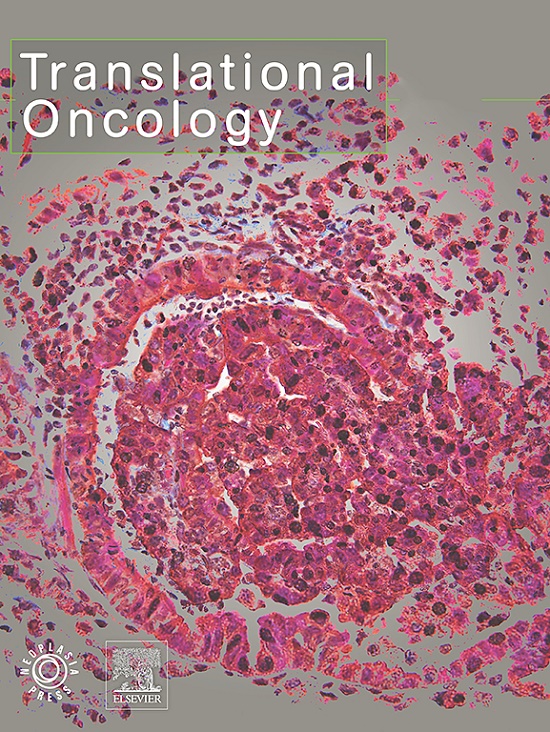Investigating the molecular mechanisms and clinical potential of APO+ endothelial cells associated with PANoptosis in the tumor microenvironment of hepatocellular carcinoma using single-cell sequencing data
IF 5
2区 医学
Q2 Medicine
引用次数: 0
Abstract
Introduction
PANoptosis is a newly identified form of programmed cell death that integrates elements of pyroptosis, apoptosis, and necroptosis. It plays a pivotal role in shaping the tumor immune microenvironment. Despite its significance, the specific functions and mechanisms of PANoptosis within the tumor microenvironment (TME) of hepatocellular carcinoma (HCC) remain unclear. This study aims to investigate these mechanisms using single-cell RNA sequencing data.
Methods
Single-cell RNA sequencing data from HCC patients were obtained from the GEO database. The AUCell algorithm was used to quantify PANoptosis activity across various cell types in the TME. Cell populations with high PANoptosis scores were further analyzed using CytoTRACE and scMetabolism to assess their differentiation states and metabolic profiles. Associations between these high-score cell subsets and patient prognosis, tumor stage, and response to immunotherapy were examined. Cell-cell communication analysis was performed to explore how PANoptosis-related APO+ endothelial cells (ECs) may influence HCC progression. Immunofluorescence staining was used to assess the spatial distribution of APO+ ECs in tumor and adjacent tissues. Finally, a CCK8 assay was conducted to evaluate the effect of APOH+ HUVECs on HCC cell proliferation.
Results
A total of 16 HCC patient samples with single-cell RNA sequencing data were included in the study. By calculating the PANoptosis scores of different cell types, we found that ECs, macrophages, hepatocytes, and fibroblasts exhibited higher PANoptosis scores. The PANoptosis scores, differentiation trajectories, intercellular communication, and metabolic characteristics of these four cell subpopulations with high PANoptosis scores were visualized. Among all subpopulations, APO+ ECs demonstrated the most significant clinical relevance, showing a positive correlation with better clinical staging, prognosis, and response to immunotherapy in HCC patients. Cellular communication analysis further revealed that APO+ ECs might regulate the expression of HLA molecules, thereby influencing T cell proliferation and differentiation, potentially contributing to improved prognosis in HCC patients. Immunofluorescence staining results indicated that APO+ ECs were primarily located in the adjacent tissues of HCC patients, with lower expression in tumor tissues. The results of cellular experiments showed that APOH+ HUVECs significantly inhibited the proliferation of HCC cells.
Conclusions
This study systematically mapped the cellular landscape of the TME in HCC patients and explored the differences in differentiation trajectories, metabolic pathways, and other aspects of subpopulations with high PANoptosis scores. Additionally, the study elucidated the potential molecular mechanisms through which APO+ ECs inhibit HCC cell proliferation and improve prognosis and immunotherapeutic efficacy in HCC patients. This research provides new insights for clinical prognosis evaluation and immunotherapy strategies in HCC.

利用单细胞测序数据研究肝癌肿瘤微环境中APO+内皮细胞与PANoptosis相关的分子机制和临床潜力
panoptosis是一种新发现的程序性细胞死亡形式,它整合了焦亡、凋亡和坏死性死亡的元素。它在形成肿瘤免疫微环境中起着关键作用。尽管具有重要意义,但PANoptosis在肝细胞癌(HCC)肿瘤微环境(tumor microenvironment, TME)中的具体功能和机制尚不清楚。本研究旨在利用单细胞RNA测序数据来研究这些机制。方法肝癌患者单细胞RNA测序数据来源于GEO数据库。AUCell算法用于量化TME中各种细胞类型的PANoptosis活性。使用CytoTRACE和scMetabolism进一步分析PANoptosis评分高的细胞群,以评估其分化状态和代谢谱。研究了这些高分细胞亚群与患者预后、肿瘤分期和免疫治疗反应之间的关系。通过细胞间通讯分析,探讨panoposis相关的APO+内皮细胞(ECs)如何影响HCC的进展。采用免疫荧光染色法评估APO+ ECs在肿瘤及邻近组织中的空间分布。最后,通过CCK8实验评估APOH+ huvec对HCC细胞增殖的影响。结果共纳入16例具有单细胞RNA测序数据的HCC患者样本。通过计算不同细胞类型的PANoptosis评分,我们发现ECs、巨噬细胞、肝细胞和成纤维细胞表现出更高的PANoptosis评分。观察4个高PANoptosis评分细胞亚群的PANoptosis评分、分化轨迹、细胞间通讯和代谢特征。在所有亚群中,APO+ ECs表现出最显著的临床相关性,与HCC患者更好的临床分期、预后和免疫治疗反应呈正相关。细胞通讯分析进一步揭示APO+ ECs可能调节HLA分子的表达,从而影响T细胞的增殖和分化,可能有助于改善HCC患者的预后。免疫荧光染色结果显示,APO+ ECs主要位于HCC患者的邻近组织,在肿瘤组织中表达较低。细胞实验结果显示,APOH+ HUVECs可显著抑制HCC细胞的增殖。本研究系统地绘制了HCC患者TME的细胞景观,并探索了PANoptosis评分高的亚群在分化轨迹、代谢途径等方面的差异。此外,本研究还阐明了APO+ ECs抑制HCC细胞增殖、改善HCC患者预后和免疫治疗效果的潜在分子机制。本研究为HCC的临床预后评估和免疫治疗策略提供了新的见解。
本文章由计算机程序翻译,如有差异,请以英文原文为准。
求助全文
约1分钟内获得全文
求助全文
来源期刊

Translational Oncology
ONCOLOGY-
CiteScore
8.40
自引率
2.00%
发文量
314
审稿时长
54 days
期刊介绍:
Translational Oncology publishes the results of novel research investigations which bridge the laboratory and clinical settings including risk assessment, cellular and molecular characterization, prevention, detection, diagnosis and treatment of human cancers with the overall goal of improving the clinical care of oncology patients. Translational Oncology will publish laboratory studies of novel therapeutic interventions as well as clinical trials which evaluate new treatment paradigms for cancer. Peer reviewed manuscript types include Original Reports, Reviews and Editorials.
 求助内容:
求助内容: 应助结果提醒方式:
应助结果提醒方式:


